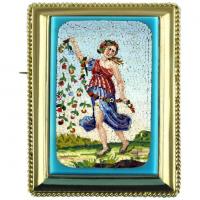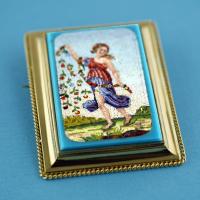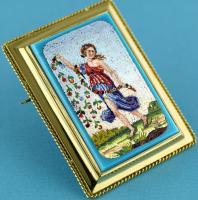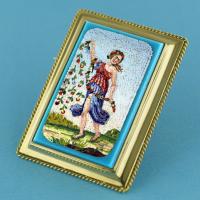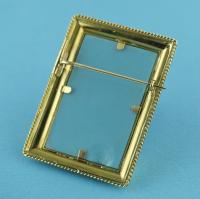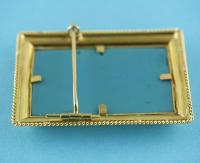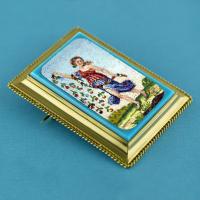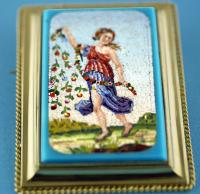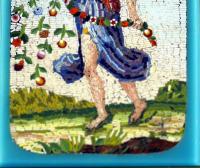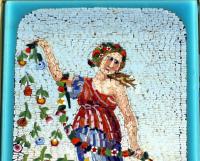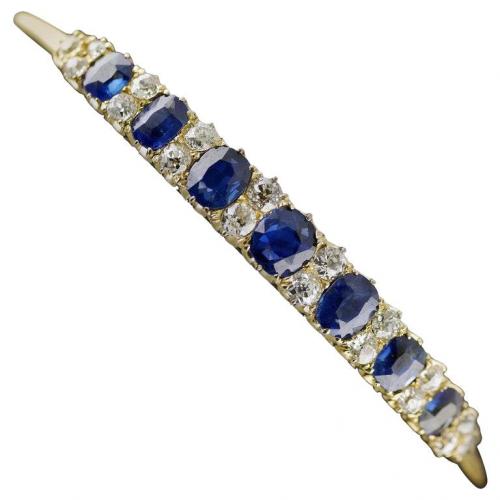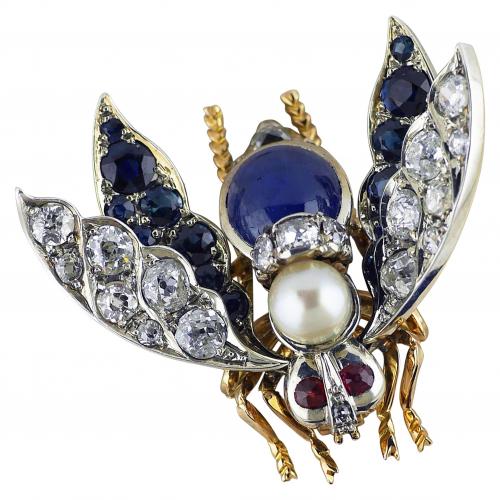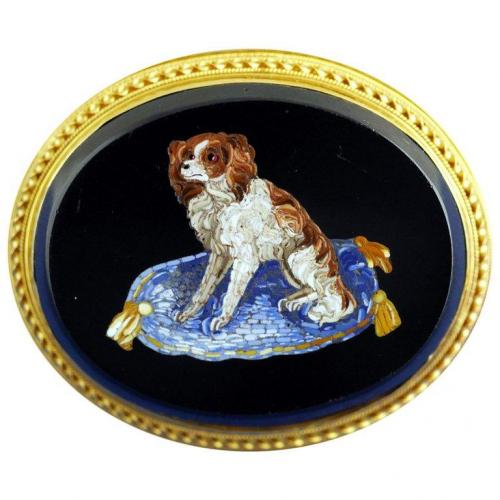
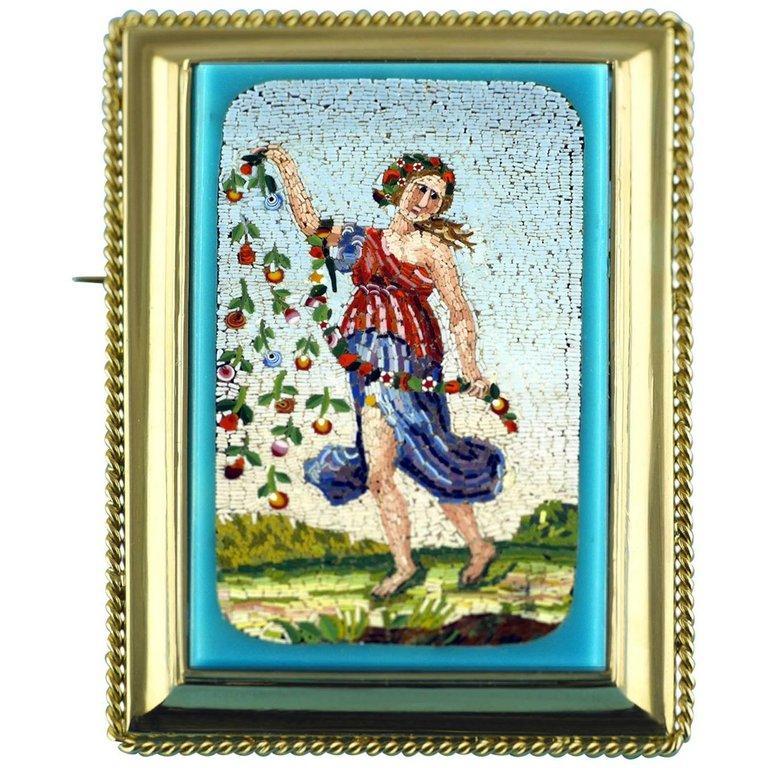
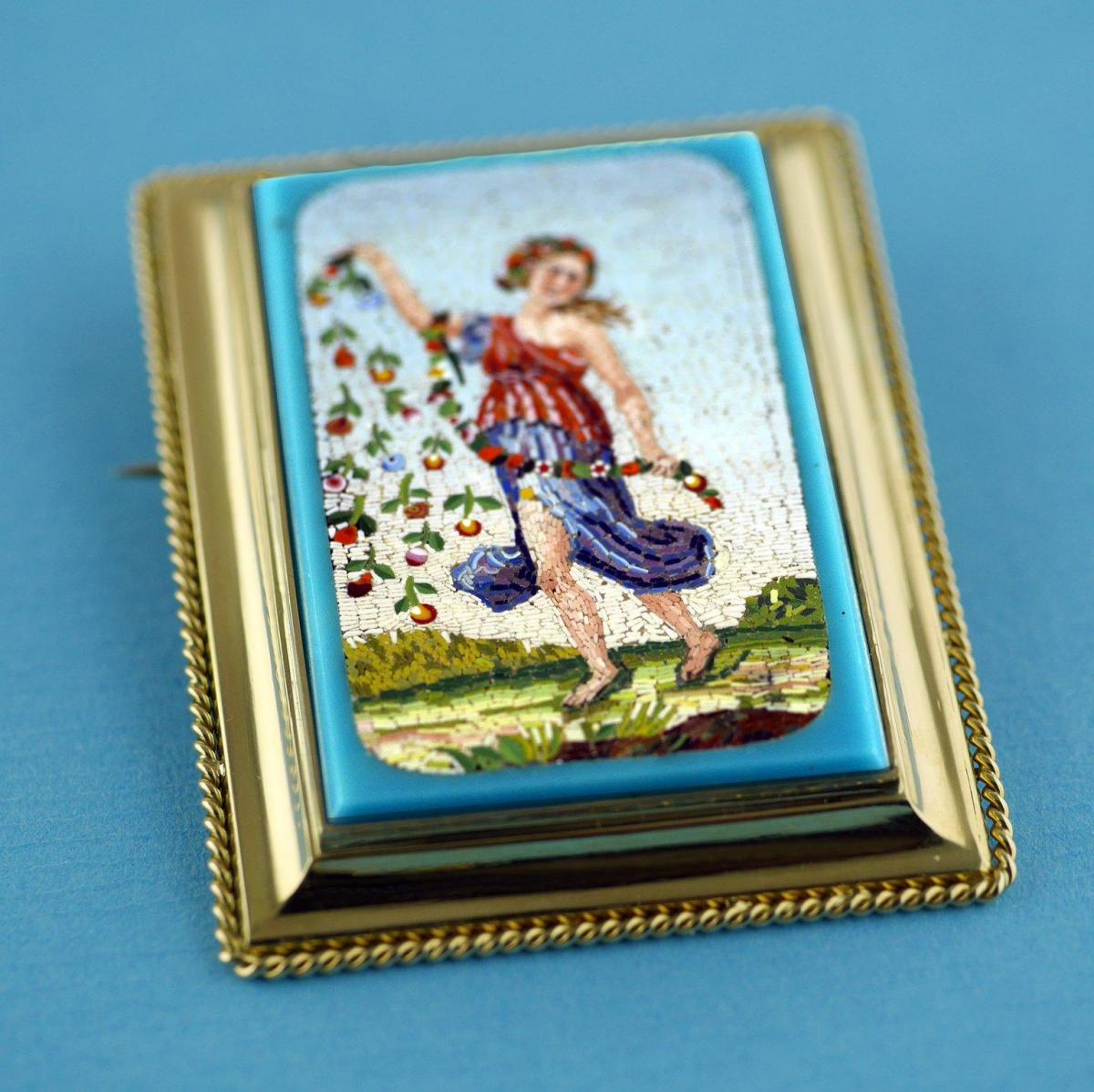
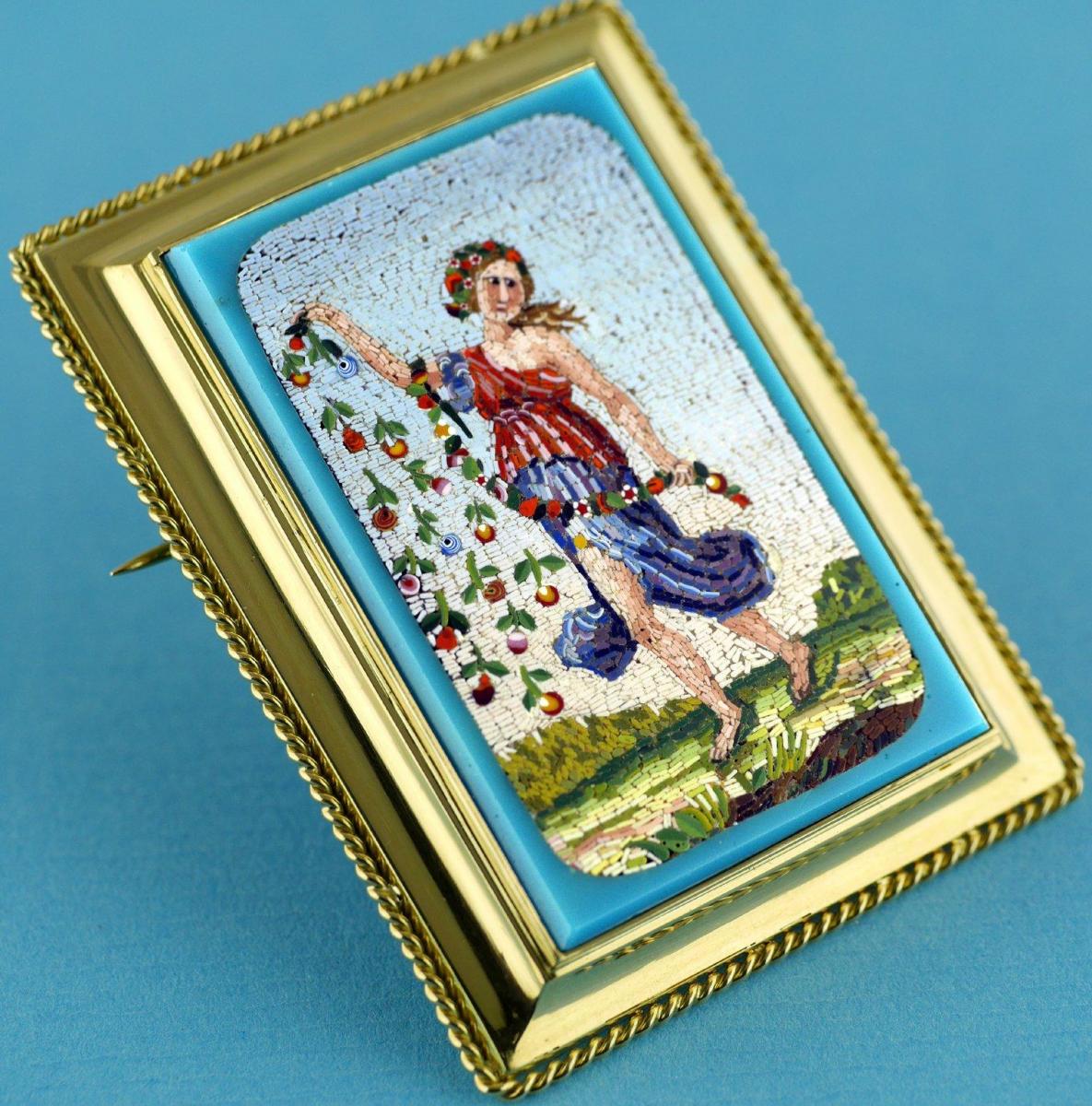
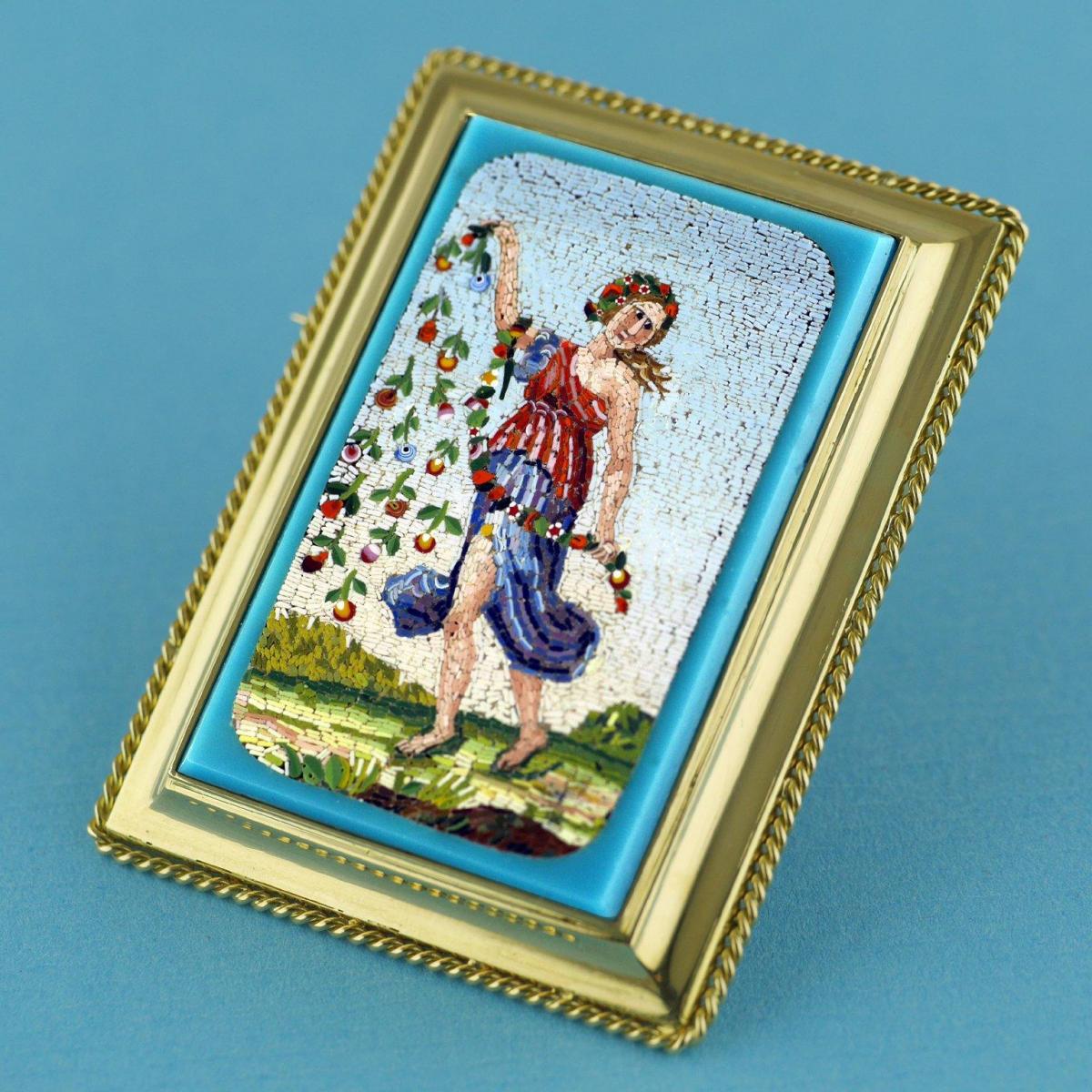
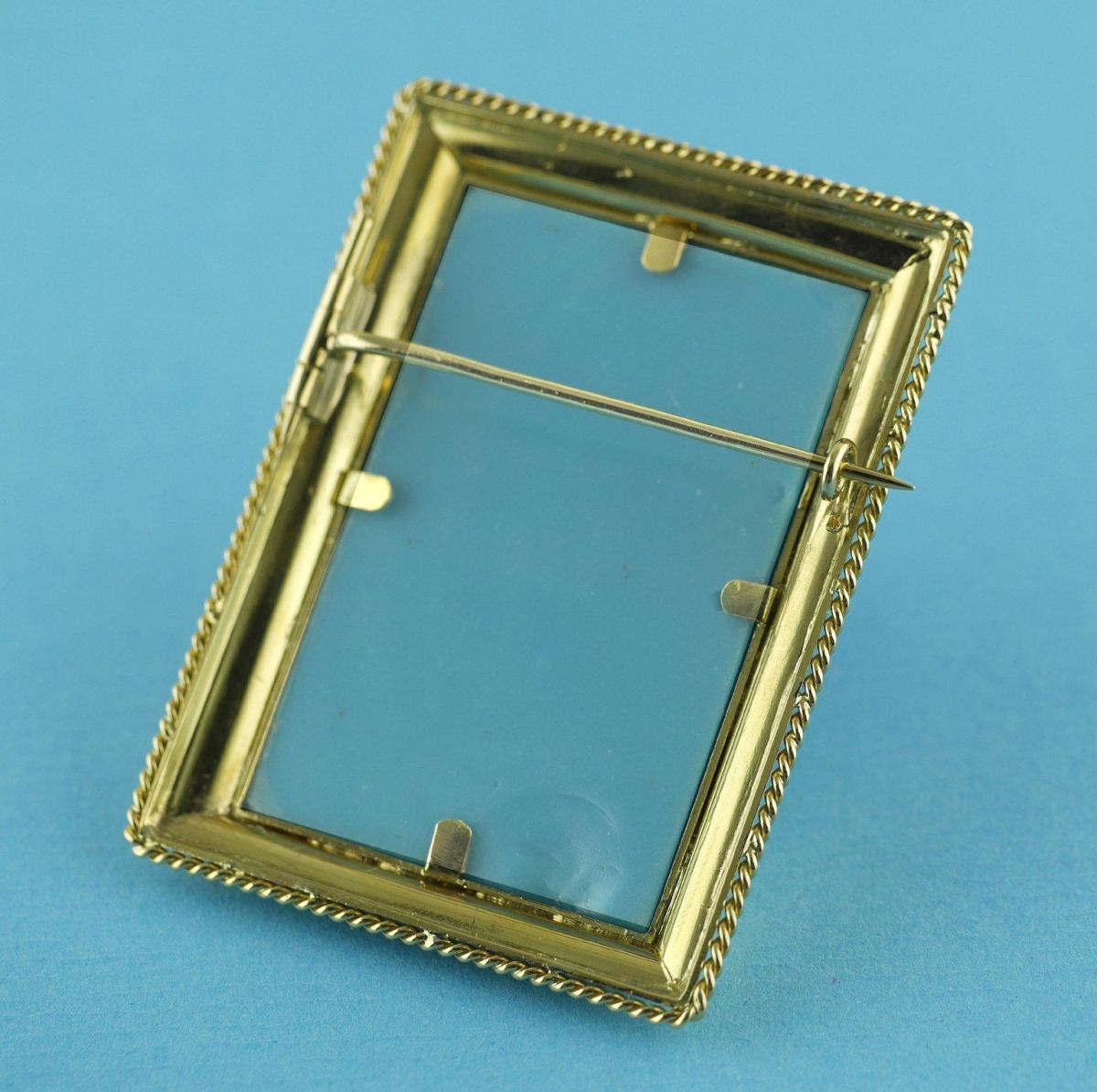
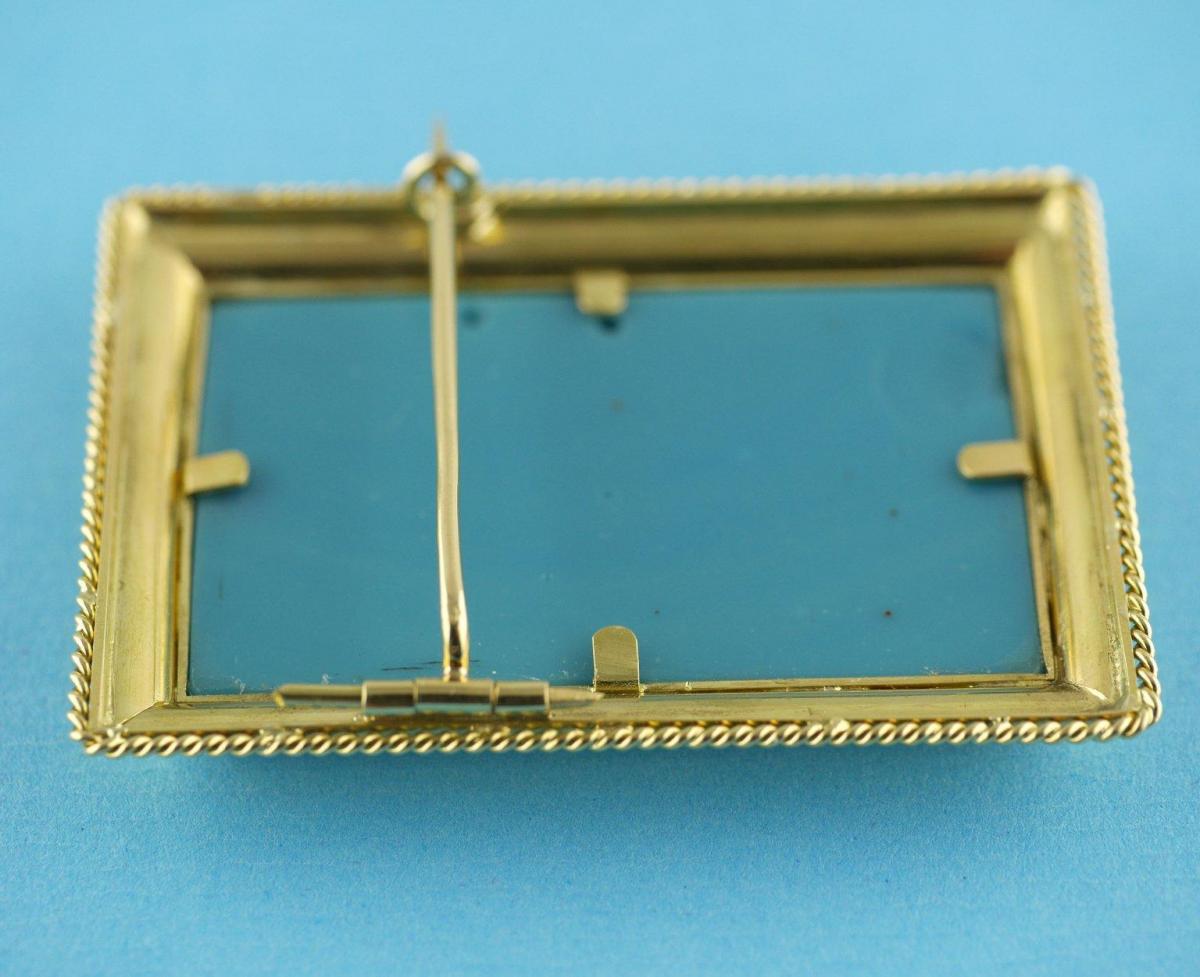
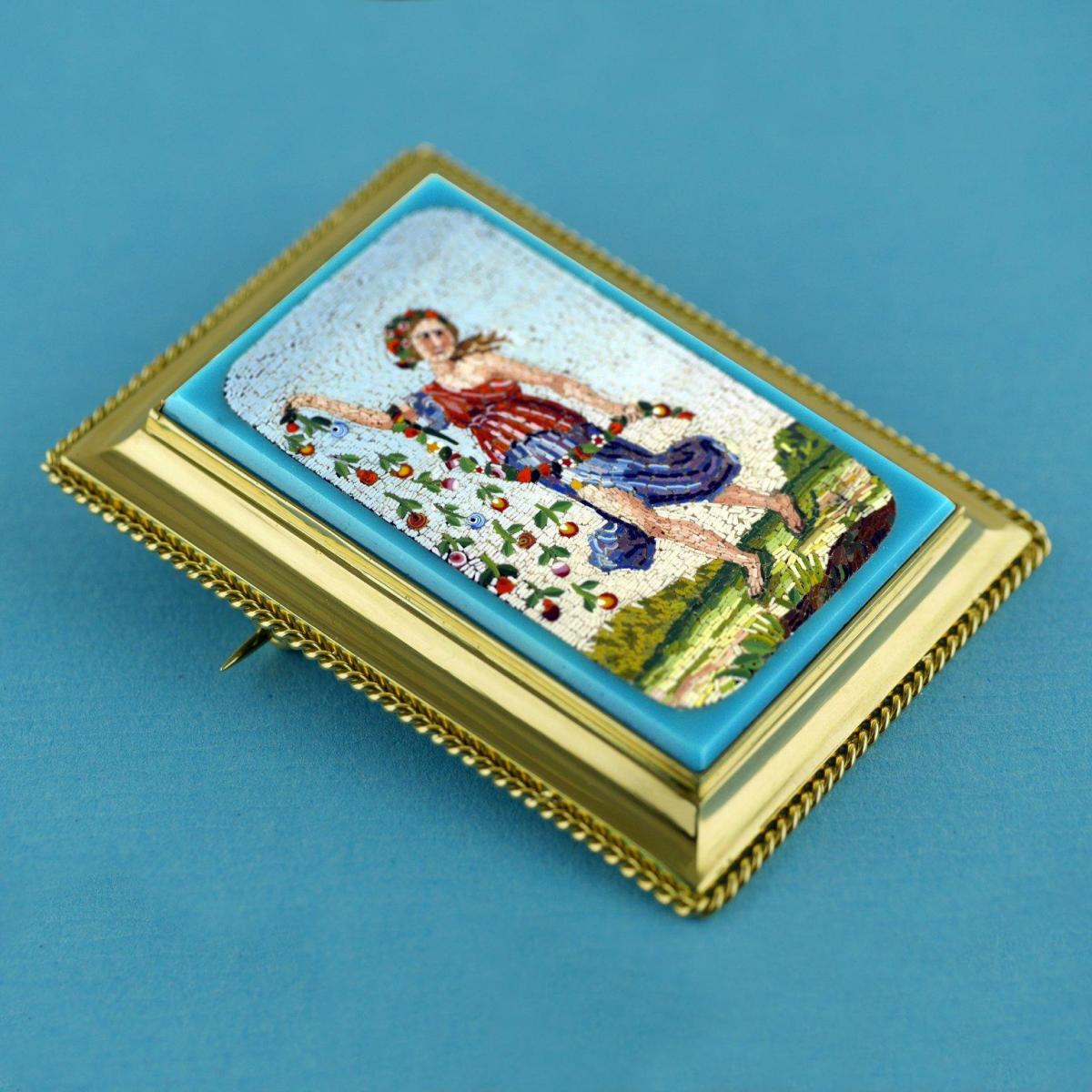
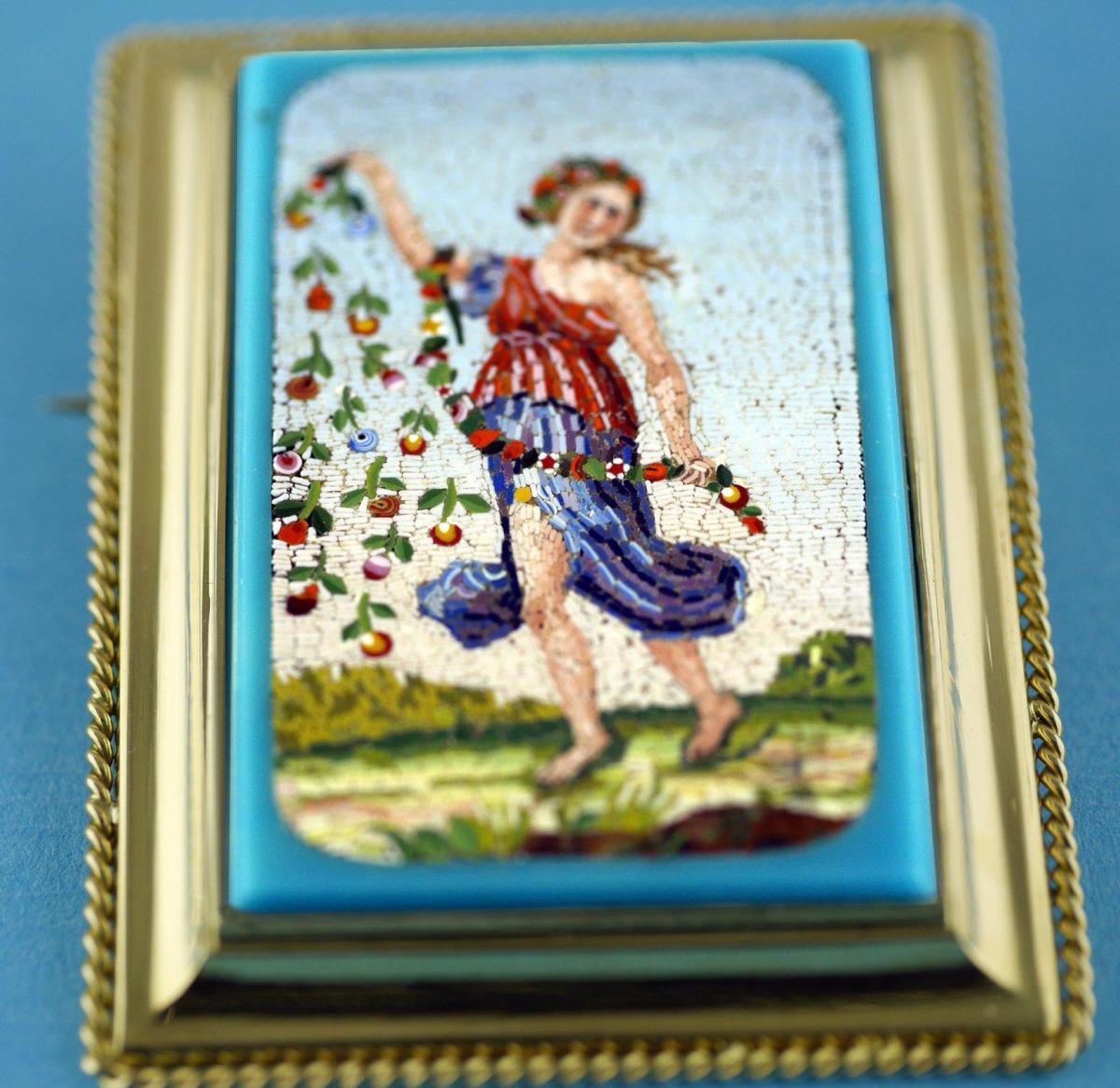
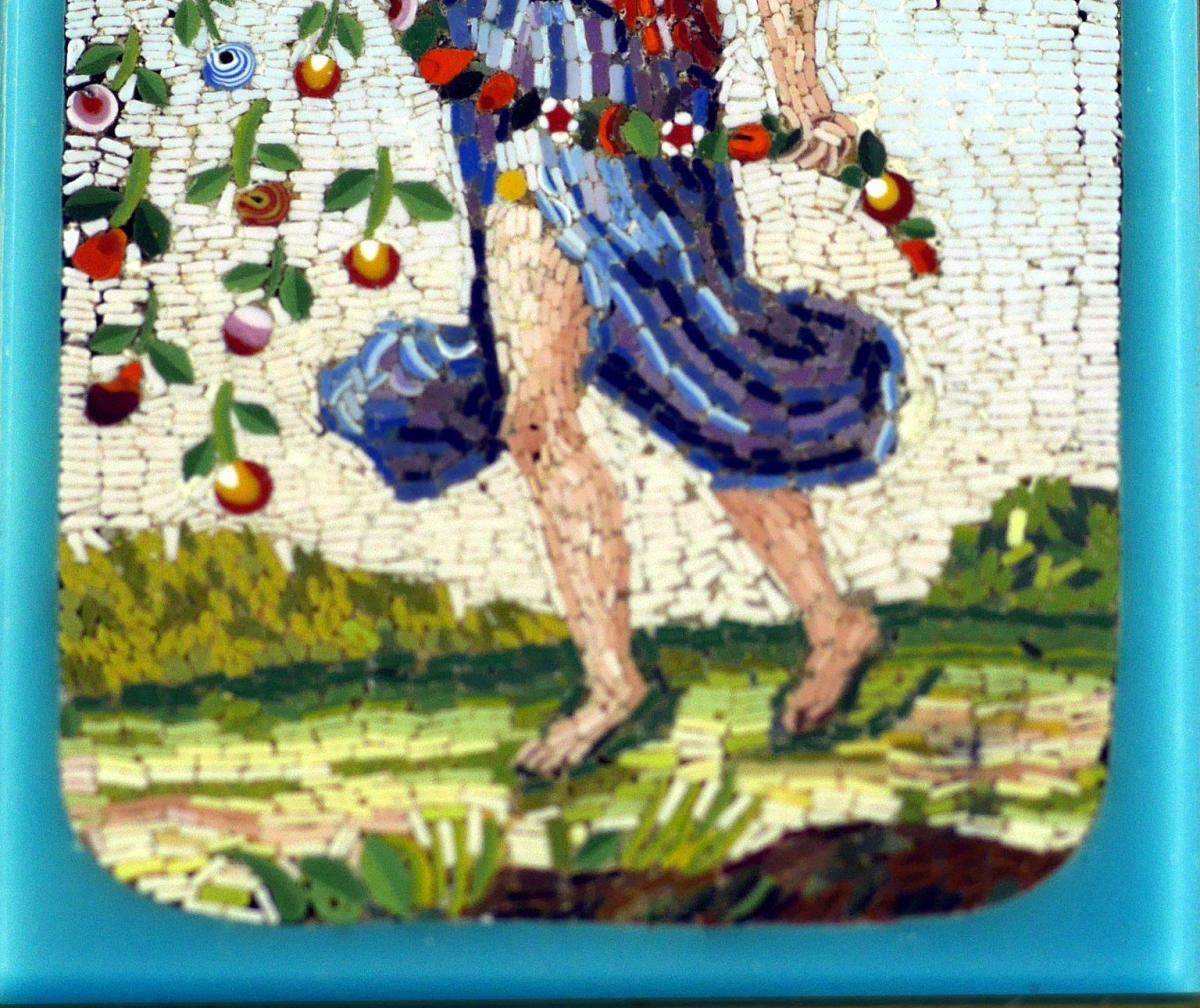
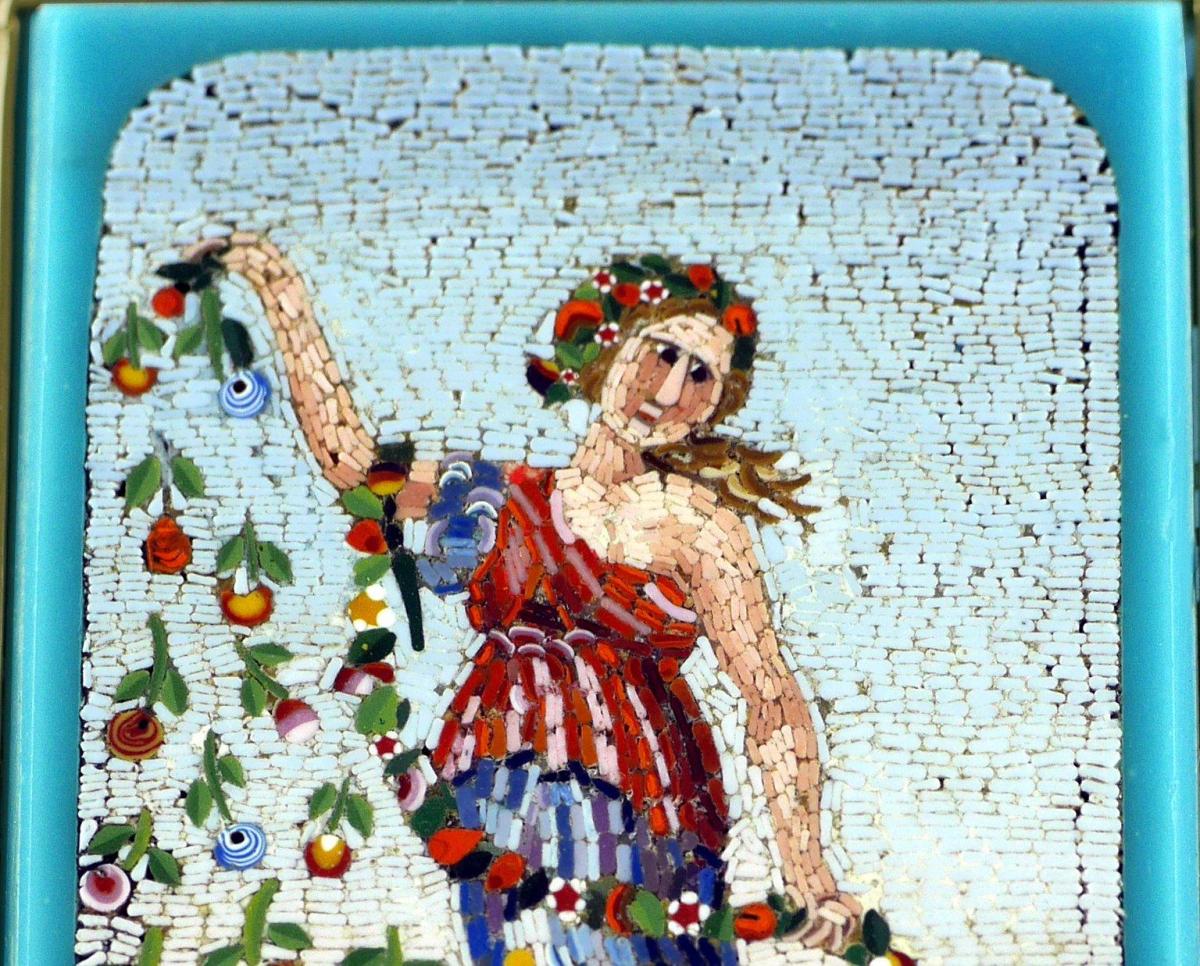
Price on application
This object is eligible for a Certificate of BADA Provenance
The BADA Standard
- Since 1918, BADA has been the leading association for the antiques and fine art trade
- Members are elected for their knowledge, integrity and quality of stock
- Our clients are protected by BADA’s code of conduct
- Our dealers’ membership is reviewed and renewed annually
- Bada.org is a non-profit site: clients deal directly with members and they pay no hidden fees
Fine quality micromosaic, depicting the Roman deity Flora, the goddess of Spring & flowers, set as a brooch in 18ct gold.
Very similar, in style, to the work of Antonio Aguatti who worked in Rome in the first half of the nineteenth century.
The image of Flora has been used throughout the centuries but reached its peak during the Renaissance revival of Antiquity, culminating in the sublime painting by Botticelli.
It is rare to find a mosaic with the background in any other colour than black, the artist having used the sky blue glass to enhance the vista of the sky and nature.
Although the Greeks and Romans had used mosaics for many centuries, it was the Italians who developed the art of micromosaics in the Vatican at the end of the 18th century.
The Napoleonic expedition to Egypt in 1798 led to a great revival of classical interest and was reflected in the subject matter of the micromosaics, many images came from Roman murals, such as the Doves of Pliny, ancient mosaic floors and newly excavated archaeological sites. Micromosaics became very fashionable pieces at the time.
During the 19th Century wealthy young aristocrats were expected to complete their education with a “Grand Tour” of Europe with Rome, Italy being an essential destination.
Most mosaics were bought in plaque form and many were brought back to be turned into jewellery or put onto furniture as mementos of their journey. The majority brought back “archaeological” pieces depicting The Colosseum, The Forum, The Pantheon etc.
However, they also brought back, a limited number with differing subjects such as landscapes, animals, mythology and more symbolic pieces e.g. Doves symbolising love, dogs faithfulness, and flowers which all had their individual symbolisms.
The Micromosaic Technique
Opaque lumps of enamel called Smalti of variegated hues were first baked in a furnace and then teased out into long filaments called Filati.
The mosaicist arranged the thousands of colours as required into a palette like an artist would and broke off the tiny coloured strands (less than 1mm each) as he needed them. They were then placed in position upright into a shallow copper tray that had been lined with a slow drying adhesive medium. The tray was tilted on an easel and the mosaicist copied the painting or design that he was borrowing as a template.
Dimensions:
Height 5.1cm
Width 3.8cm
Depth 0.6cm
Depth inc Brooch Pin 1cm
Pristine, no loss of tesserae or damage to Micromosaic, very minor surface scratches to crystal, unable to see with the naked eye. Very small slight curvature to rear of glass panel (integral to glass during firing process, not damaged).
Dimensions
Width: 38.10 mm - 1.50 inches, Height: 51.05 mm - 2.01 inches, Depth: 9.91 mm - 0.39 inchesStock number
2415The BADA Standard
- Since 1918, BADA has been the leading association for the antiques and fine art trade
- Members are elected for their knowledge, integrity and quality of stock
- Our clients are protected by BADA’s code of conduct
- Our dealers’ membership is reviewed and renewed annually
- Bada.org is a non-profit site: clients deal directly with members and they pay no hidden fees


